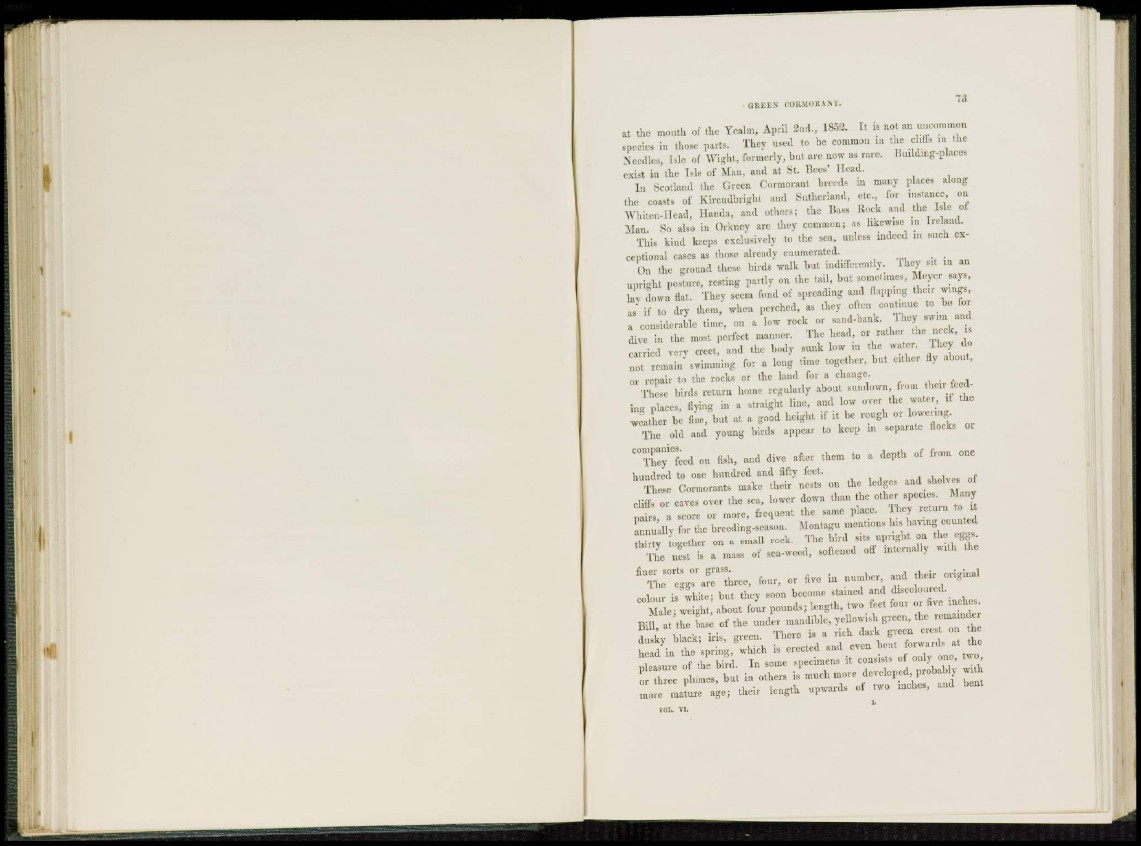
at the mouth of the Yealm, April 2nd., 1852. It is not an uncommon
species in those parts. They used to be common in the cliffs in the
Needles, Isle of Wight, formerly, but are now as rare. Building-places
exist in the Isle of Man, and at St. Bees' Head.
I n Scotland the Green Cormorant breeds in many places along
the coasts of Kircudbright and Sutherland, etc., for instance, on
A\ hiten-1 lead, Handa, and others; the Bass Rock and the Isle of
Alan. So also in Orkney are they common; as likewise in Ireland.
This kind keeps exclusively to the sea, unless indeed in such exceptional
cases as 'hose already enumerated.
On the ground these birds walk but indifferently. They sit in an
upright posture, resting partly on the tail, but some) hues, Meyer says,
lay down flat. They seem fond of spreading and flapping their wings,
as if to dry them, when perched, as they often continue to be for
a considerable time, on a low rock or sand-bank. They swim and
dive in the most perfect manner. The head, or rather the neck, is
carried very erect, and the body sunk low in the water. They do
not remain swimming for a long time together, but either fly about,
or repair to the rocks or the land for a change.
These birds return home regularly about sundown, from their feeding
places, flying in a straight Hue, and low over the water, if the
weather be fine, but at a good height if it be rough or lowering.
The old and young birds appear to keep in separate flocks or
companies.
They feed on fish, and dive after them to a depth of from one
hundred to one hundred and fifty feet.
These Cormorants make their nests on the ledges and shelves of
cliffs or caves over the sea, lower down than the other species. Many
pairs, a score or more, frequent the same place. They return to it
annually for the breeding-season. Montagu mentions his having counted
t h i r ty together on a small rock. The bird sits upright on the eggs.
The nest is a mass of sea-weed, softened off internally with the
finer sorts or grass.
The eggs are three, four, or five in number, and their original
colour is white; but they soon become stained and discoloured.
Male; weight, about four pounds; length, two feet four or five inches.
Bill, at the base of the under mandible, yellowish green, the remainder
dusky black; iris, green. There is a rich dark green crest on the
head in the spring, which is erected and even bent forwards at the
pleasure of the bird. In some specimens it consists of only one, two,
or three plumes, but in others is much more developed, probably with
more mature age; their length upwards of two iuches, and bent